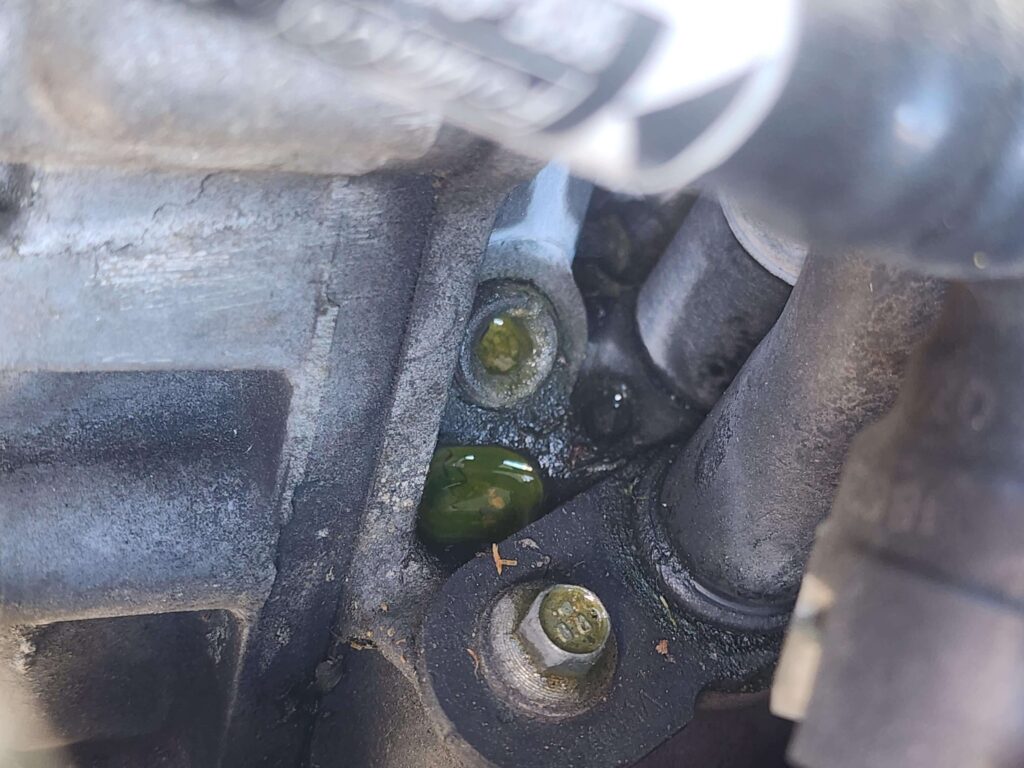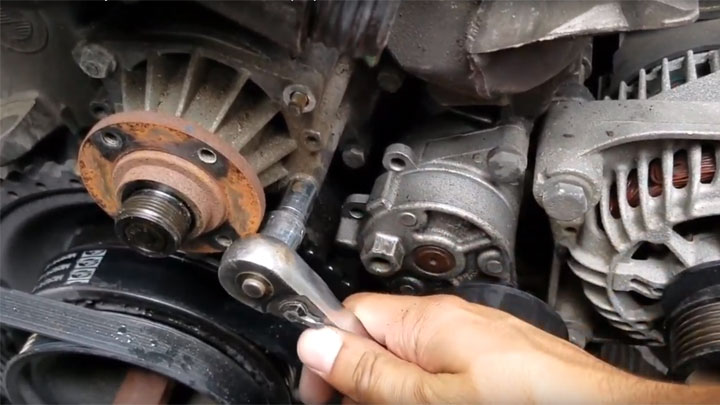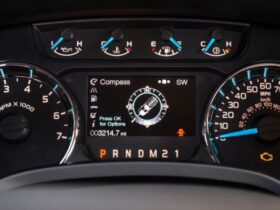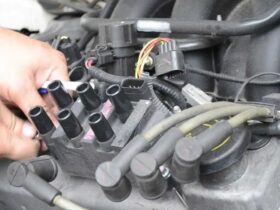The water pump in your Ford F150 is a critical component responsible for maintaining your engine’s temperature within acceptable limits. It accomplishes this by circulating coolant through the engine and radiator to dissipate heat.
A malfunctioning water pump can lead to severe engine problems if not identified and resolved promptly. Here’s a comprehensive guide to understanding, diagnosing, and fixing water pump issues in your F150.
Identify and Address a Faulty Water Pump in a Ford F150
Symptoms of a Bad Water Pump in a Ford F150
Recognizing the signs of a failing water pump is crucial for preventing further damage. Here are the most common symptoms:

- Coolant Leaks: If you notice green or reddish fluid pooling under your truck, it’s a clear sign of coolant leakage, often from a faulty pump.
- Engine Overheating: During normal driving conditions, an overheating engine is one of the earliest indications of a bad water pump. Check the temperature gauge; if it consistently reads higher than usual, it’s time to inspect the pump.
- Steam or Smoke from the Engine: Seeing steam or smoke emanating from under the hood suggests the engine is overheating. This could result from a failing pump, clogged coolant hoses, or other cooling system issues.
- Unusual Noises: Squealing or grinding noises from the engine may indicate a loose or worn-out drive belt connected to the water pump pulley.
- Erratic Temperature Gauge Readings: A faulty water pump can cause the temperature gauge to fluctuate or provide inaccurate readings.
Common Causes of Water Pump Failure in Ford F150
Water pumps can fail for various reasons. Understanding these causes can help you take preventive measures:
- Broken or Misaligned Drive Belt: A drive belt that is too tight or improperly installed can snap or wear out, affecting the pump’s function.
- Damaged Seals: Seals in the cooling system prevent air from entering and coolant from leaking. A broken or poorly installed seal can lead to air ingress, coolant loss, and pump failure.
- Corrosion: Air entering the cooling system due to a damaged seal or infrequent use can corrode the pump’s internal components, significantly shortening its lifespan.
- Poor-Quality Coolant: Using substandard or incompatible coolant can damage the water pump, leading to inefficiency or total failure.
- Thermostat Issues: A faulty thermostat may obstruct coolant flow, putting undue stress on the water pump and causing it to fail prematurely.
- Natural Wear and Tear: Every component in the cooling system, including the water pump, has a finite lifespan. Regular maintenance and timely replacements are essential.
Steps to Fix a Bad Water Pump in a Ford F150
Replacing a bad water pump requires attention to detail and the right tools. Follow these steps for a safe and efficient replacement:
- Prepare Your Truck
- Park your F150 on a flat surface.
- Engage the parking brake and shift the gear into the park position.
- Allow the engine to cool completely before starting any repairs.
- Drain the Coolant
- Place a fluid catch pan under the radiator.
- Locate the radiator petcock, open it, and allow the coolant to drain fully.
- Disconnect the Battery
- Disconnect the battery terminals (black for negative, red for positive) for safety.
- Remove Components
- Detach the air intake tube from the engine by loosening its bolts.
- Use a wrench to loosen the bolts on the water pump pulley and remove the drive belt.
- Replace the Water Pump
- Unbolt and remove the faulty water pump.
- If replacing the thermostat, remove its bolts and hoses, then install a new one.
- Mount the new water pump and securely tighten all bolts.
- Reattach the heater outlet tube, pulley, and drive belt.
- Reconnect the Battery
- Attach the positive and negative terminals of the battery.
- Refill the Coolant
- Add fresh coolant to the system, ensuring it meets your F150’s specifications.
- Check the System
- Start the engine and observe for leaks or abnormal temperature readings. Ensure the repair has resolved the issue.
Maintenance Tips and Replacement Costs
- A typical water pump lasts between 55,000 and 95,000 miles, depending on usage and maintenance.
- A new water pump ranges from $450 to $750, including parts and labor. Ensure the replacement pump is durable, fits your engine size, and has a warranty.
- Regularly check the coolant level and quality.
- Inspect seals, hoses, and the drive belt during routine maintenance.
- Schedule periodic servicing to prolong the lifespan of your truck’s cooling system.
Why the Water Pump is Important for Your Ford F150
The water pump ensures that your truck’s engine remains at an optimal temperature by circulating coolant to absorb and dissipate heat. The engine would overheat without it, leading to potential damage and costly repairs. Proper water pump maintenance and the entire cooling system are essential for reliable vehicle performance.
When the engine overheats, it can cause significant damage, including warped cylinder heads, damaged pistons, and even complete engine failure. Promptly addressing water pump issues safeguards your F150’s longevity and efficiency.
Regular checks and timely repairs can save you from unexpected breakdowns and costly repairs. Keep your Ford F150’s cooling system in excellent condition to ensure safe and efficient driving.






Leave a Reply
View Comments